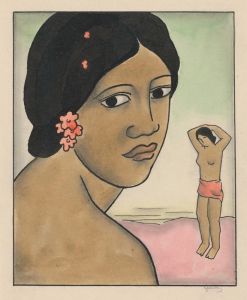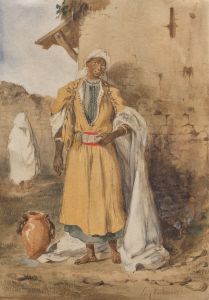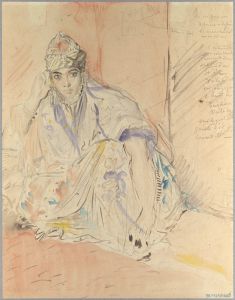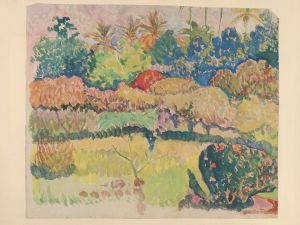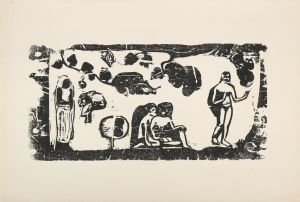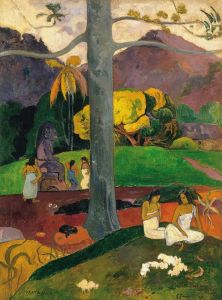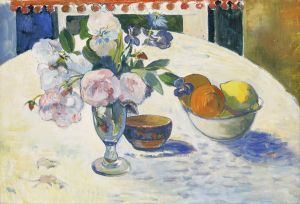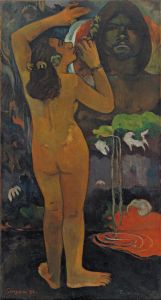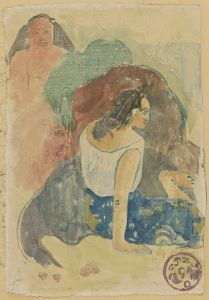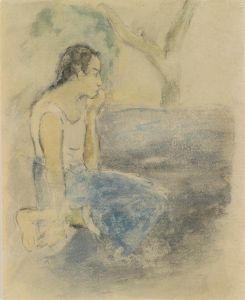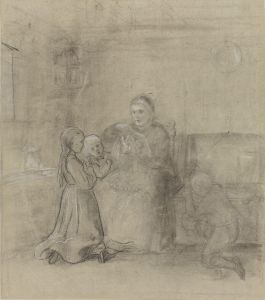
Three Tahitians
A hand-painted replica of Paul Gauguin’s masterpiece Three Tahitians, meticulously crafted by professional artists to capture the true essence of the original. Each piece is created with museum-quality canvas and rare mineral pigments, carefully painted by experienced artists with delicate brushstrokes and rich, layered colors to perfectly recreate the texture of the original artwork. Unlike machine-printed reproductions, this hand-painted version brings the painting to life, infused with the artist’s emotions and skill in every stroke. Whether for personal collection or home decoration, it instantly elevates the artistic atmosphere of any space.
Paul Gauguin's painting "Three Tahitians" is an intriguing work that reflects the artist's fascination with the culture and people of Tahiti. Created in 1899, during Gauguin's second stay in Tahiti, the painting is a vivid example of his post-impressionist style, characterized by bold colors, strong outlines, and a departure from the naturalistic representation of subjects.
The painting depicts three figures, presumably Tahitian, arranged in a triangular composition. The central figure is a woman, flanked by two men. Each figure is adorned with traditional Tahitian attire, which Gauguin often incorporated into his works to emphasize the exotic and the primitive, as perceived by Western audiences of the time. The use of vibrant colors and simplified forms in "Three Tahitians" exemplifies Gauguin's approach to capturing the essence of his subjects rather than focusing on realistic details.
Gauguin's time in Tahiti was marked by a desire to escape European civilization and immerse himself in what he considered a more authentic and unspoiled culture. This pursuit is evident in "Three Tahitians," where the figures are set against a lush, tropical backdrop, evoking a sense of paradise and tranquility. The painting reflects Gauguin's interest in the spiritual and symbolic aspects of Tahitian life, which he often explored through his art.
The composition of "Three Tahitians" is notable for its balance and symmetry, with the central female figure serving as the focal point. The figures' expressions and gestures are serene and contemplative, inviting viewers to ponder their thoughts and emotions. Gauguin's use of color is particularly striking, with rich blues, greens, and reds creating a harmonious yet dynamic visual experience.
"Three Tahitians" is housed in the Ny Carlsberg Glyptotek in Copenhagen, Denmark, where it is part of a significant collection of Gauguin's works. The painting is an important example of Gauguin's exploration of non-Western themes and his contribution to the development of modern art. It reflects his belief in the power of art to transcend cultural boundaries and communicate universal human experiences.
Gauguin's work, including "Three Tahitians," has been the subject of much scholarly analysis and debate. His portrayal of Tahitian subjects has been critiqued for its romanticized and sometimes stereotypical depiction of indigenous people. However, his influence on the art world is undeniable, as he paved the way for future artists to explore new themes and techniques.
In summary, "Three Tahitians" is a testament to Paul Gauguin's artistic vision and his quest to capture the beauty and mystery of Tahitian culture. Through his use of color, composition, and symbolism, Gauguin created a work that continues to captivate and inspire audiences worldwide.






